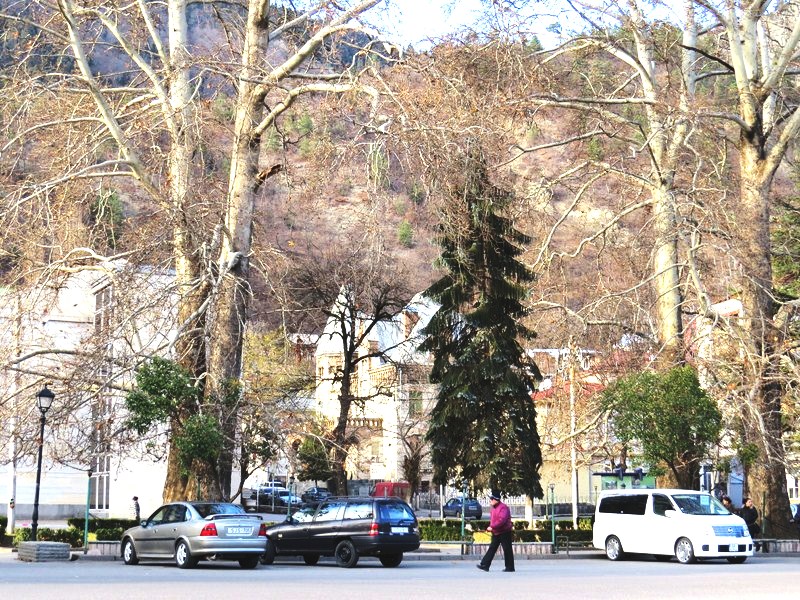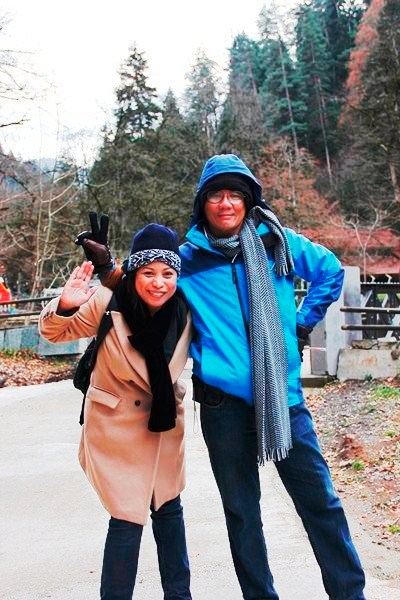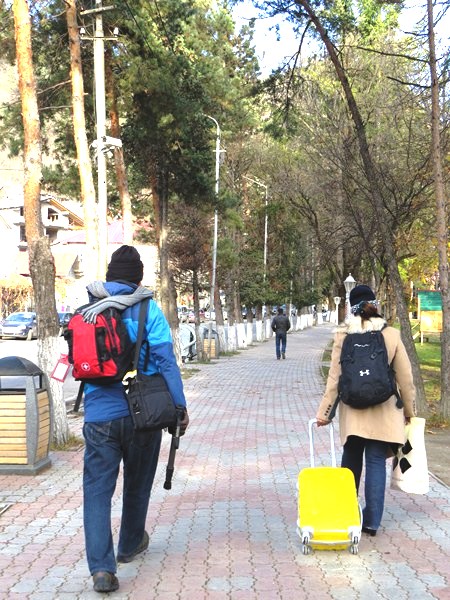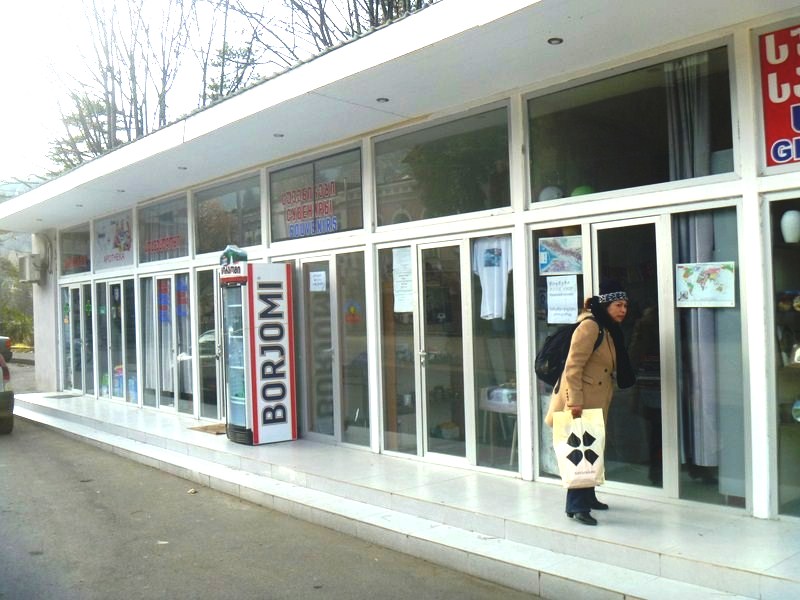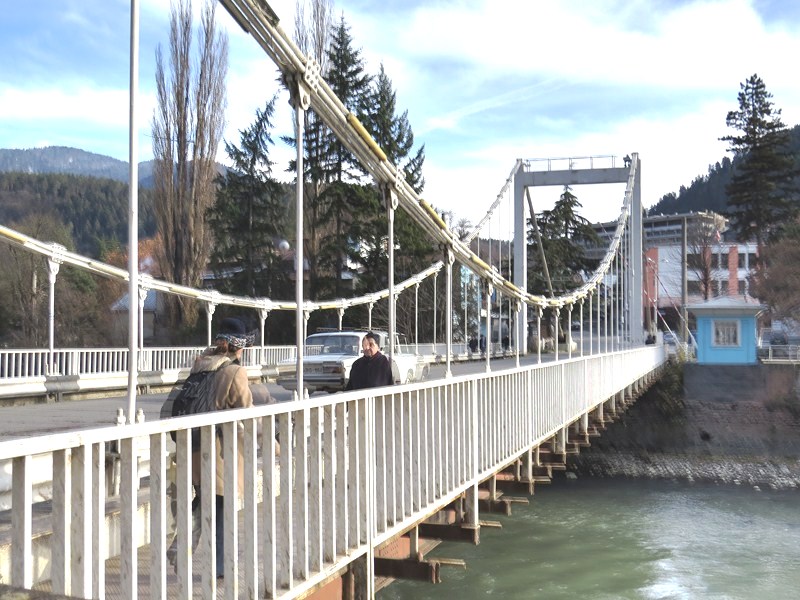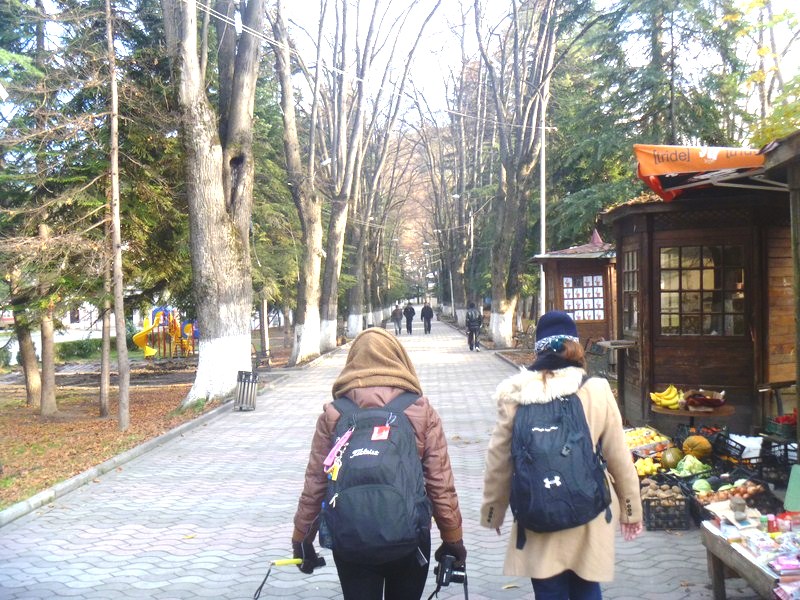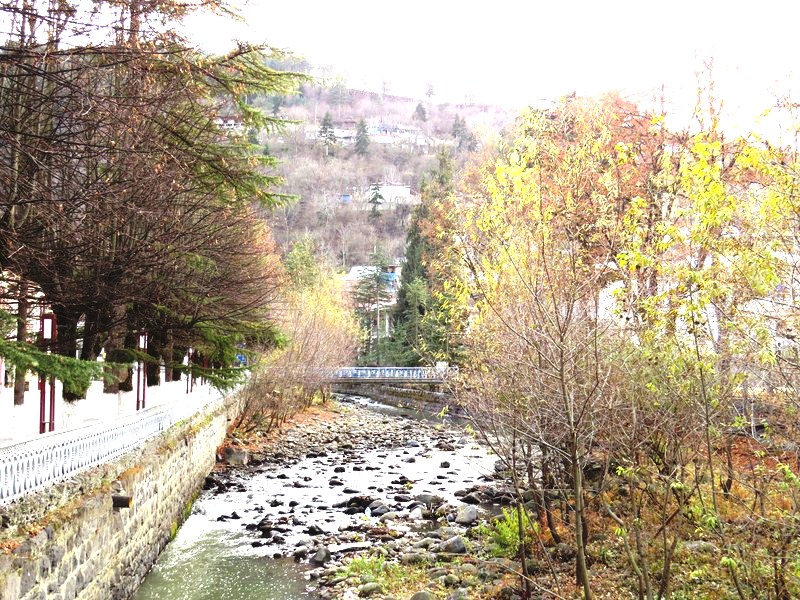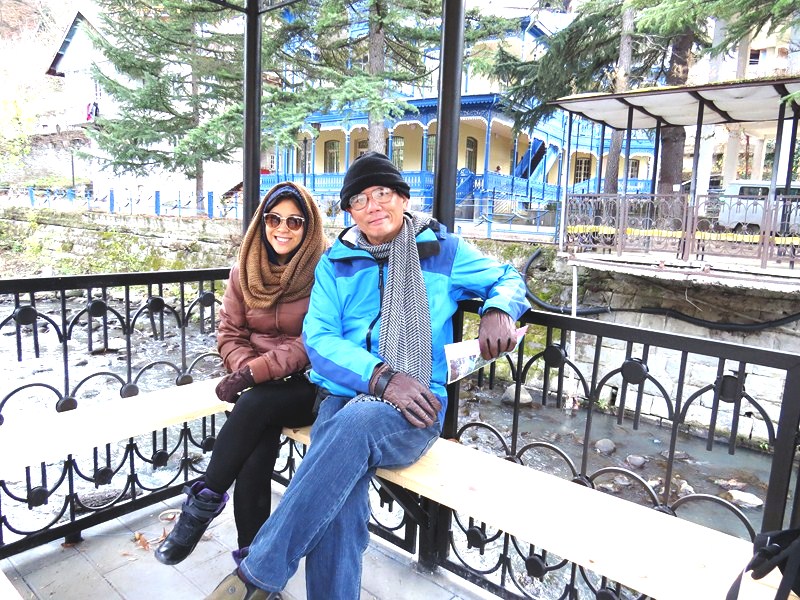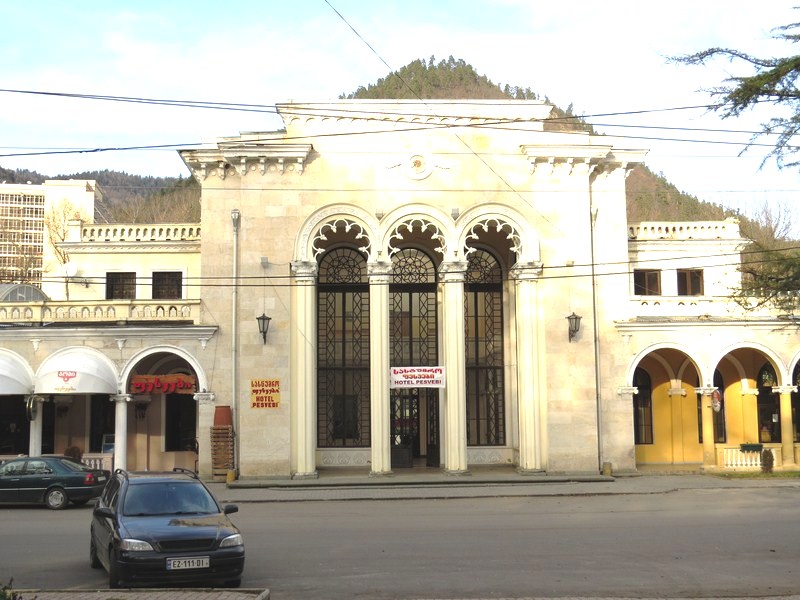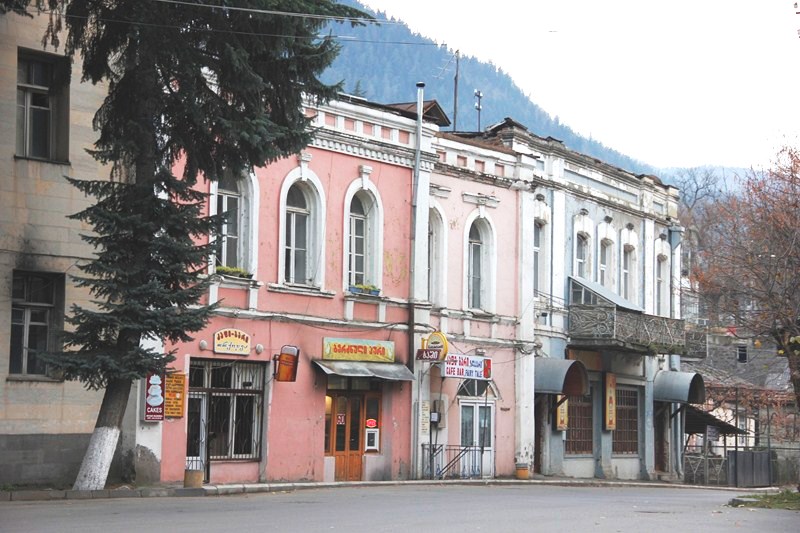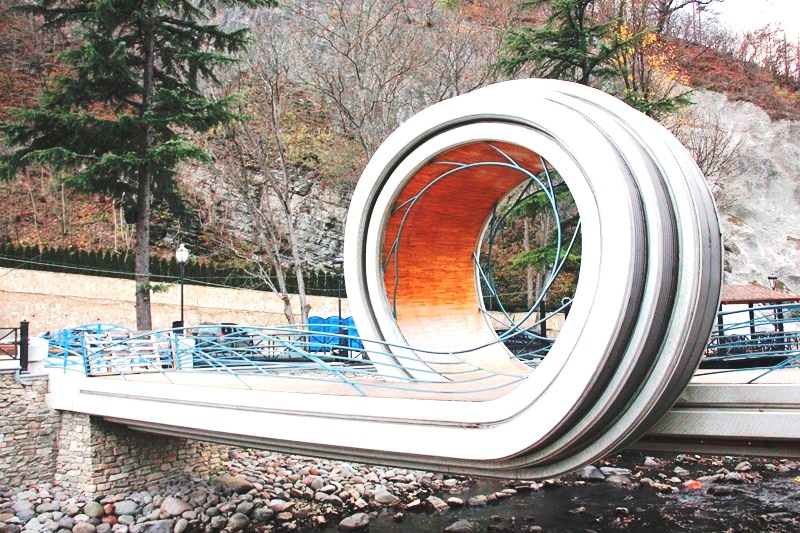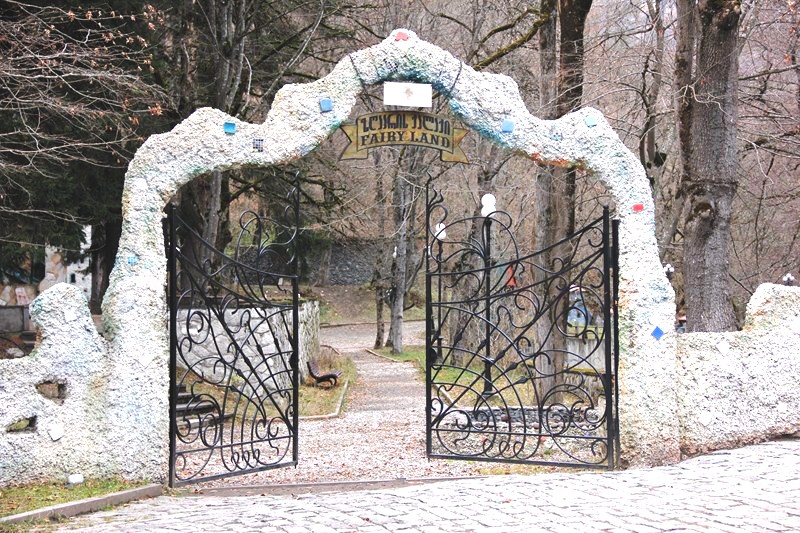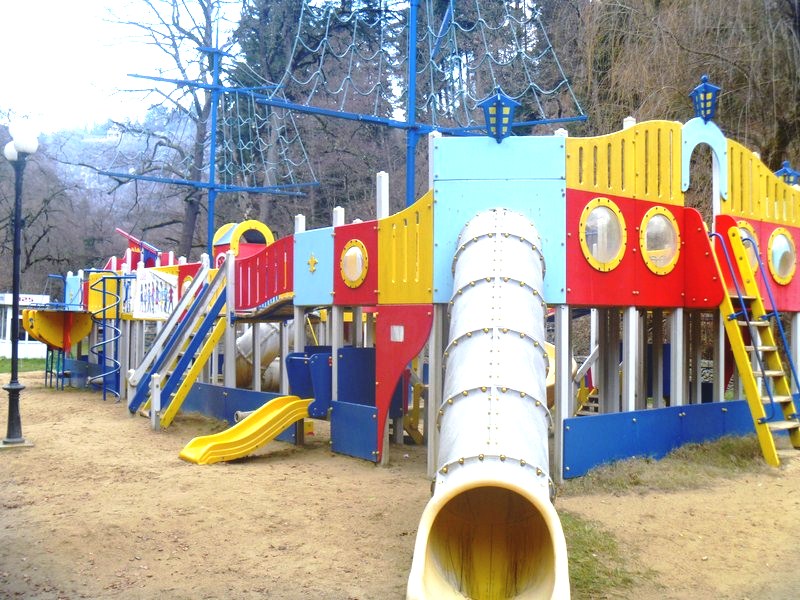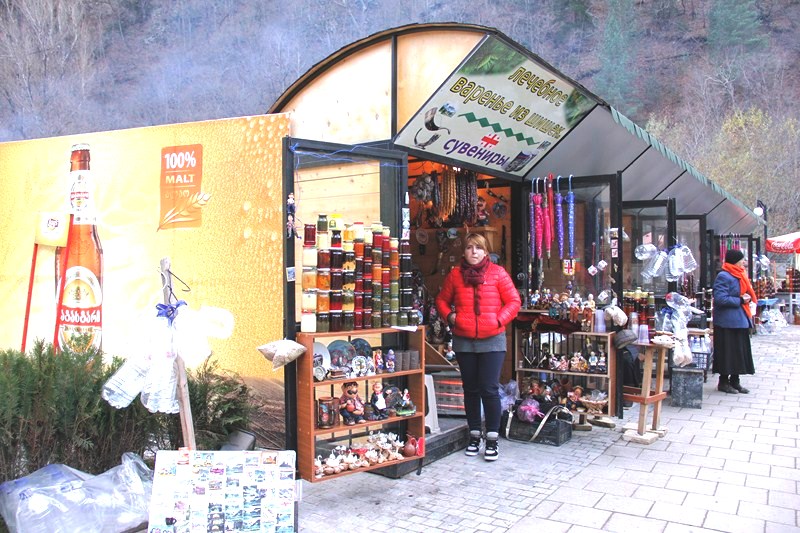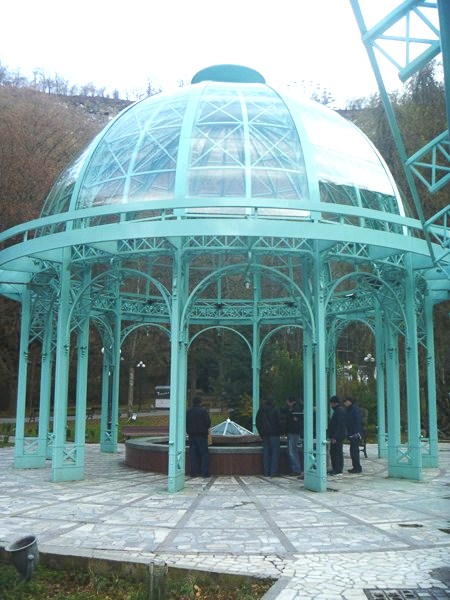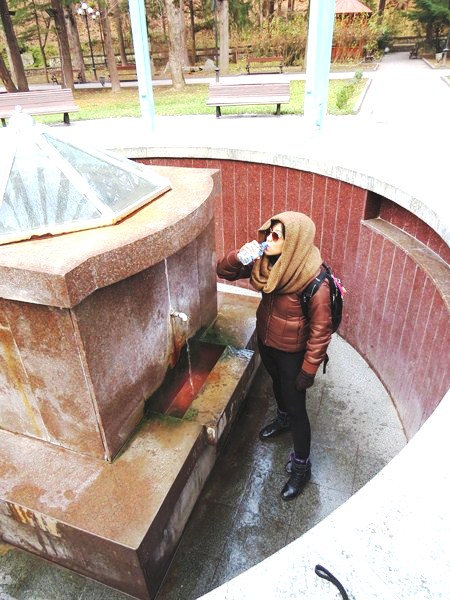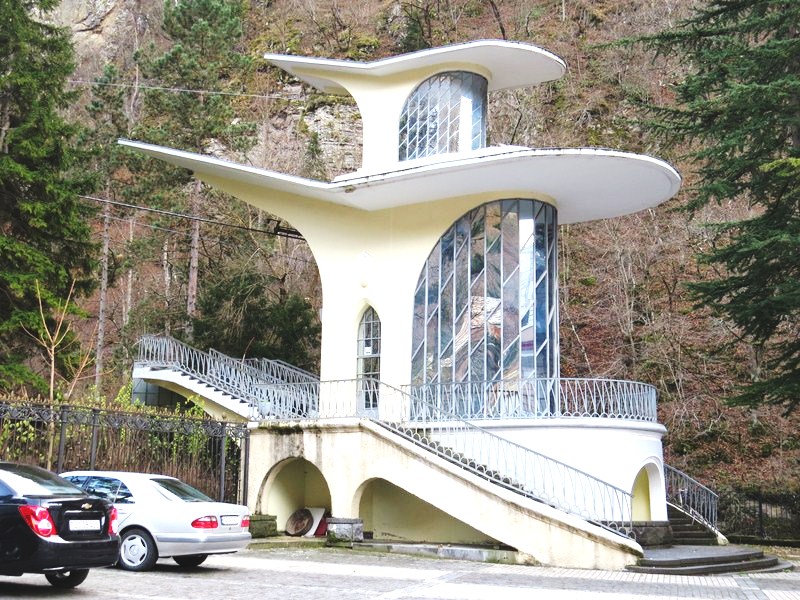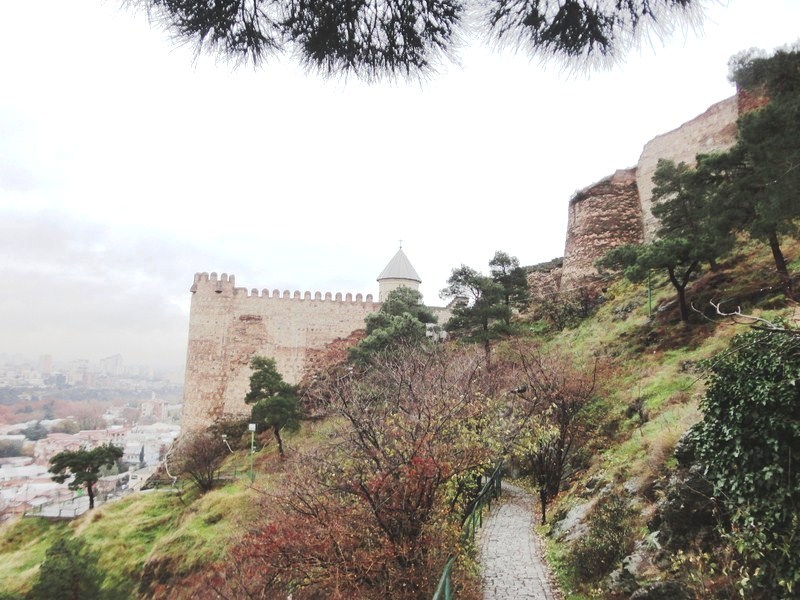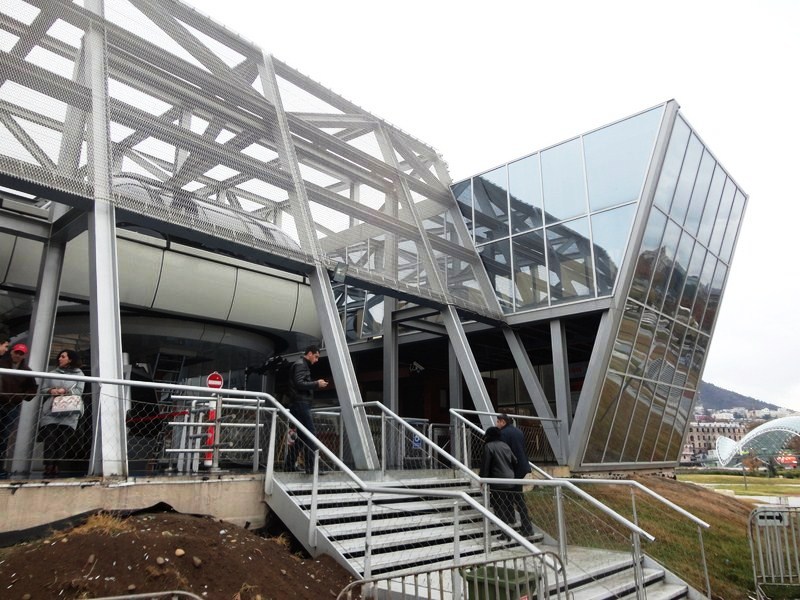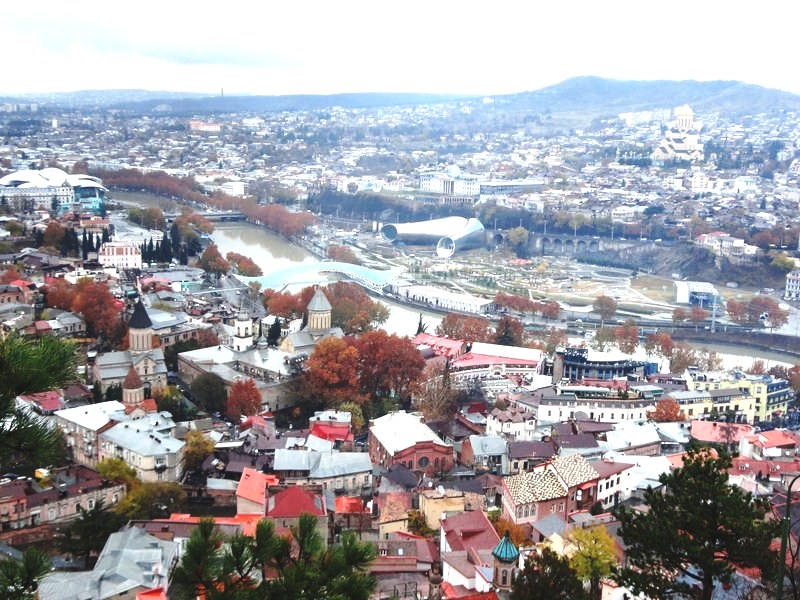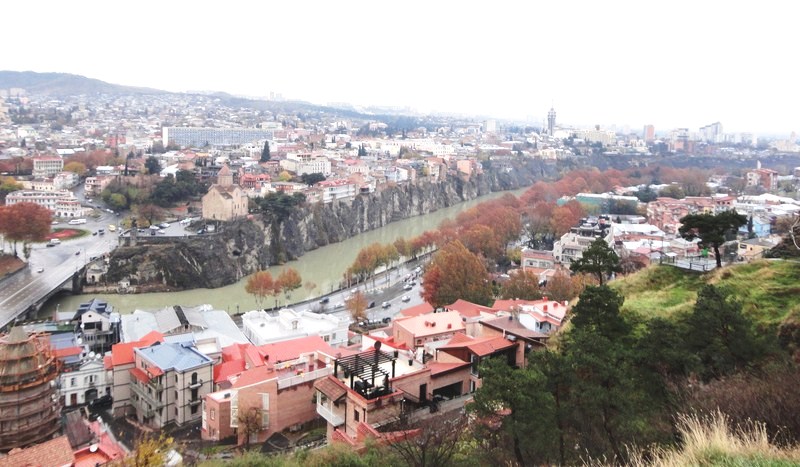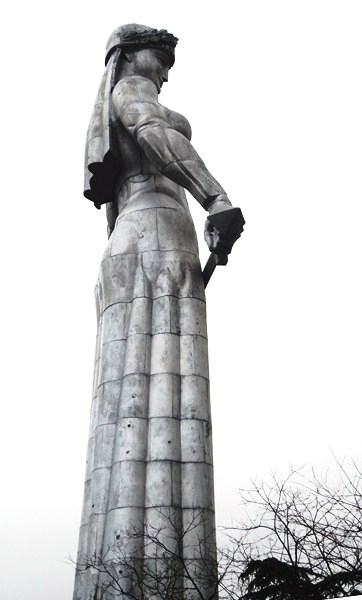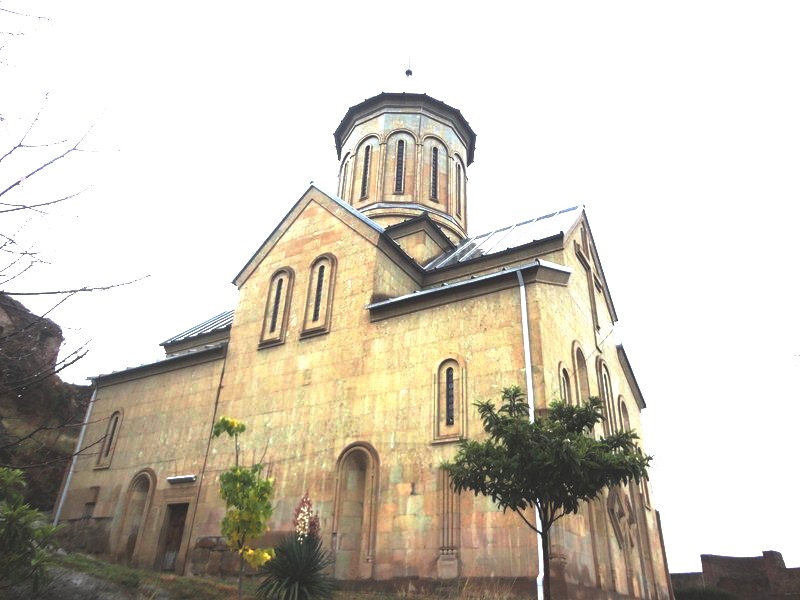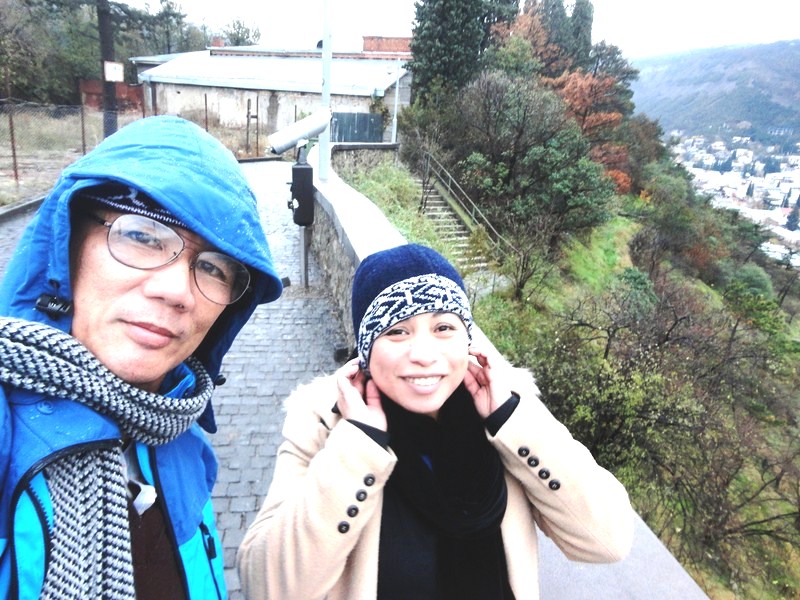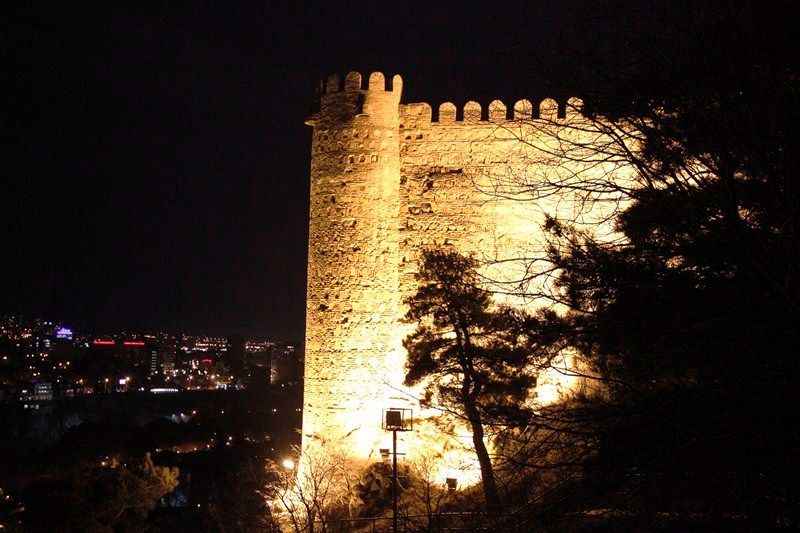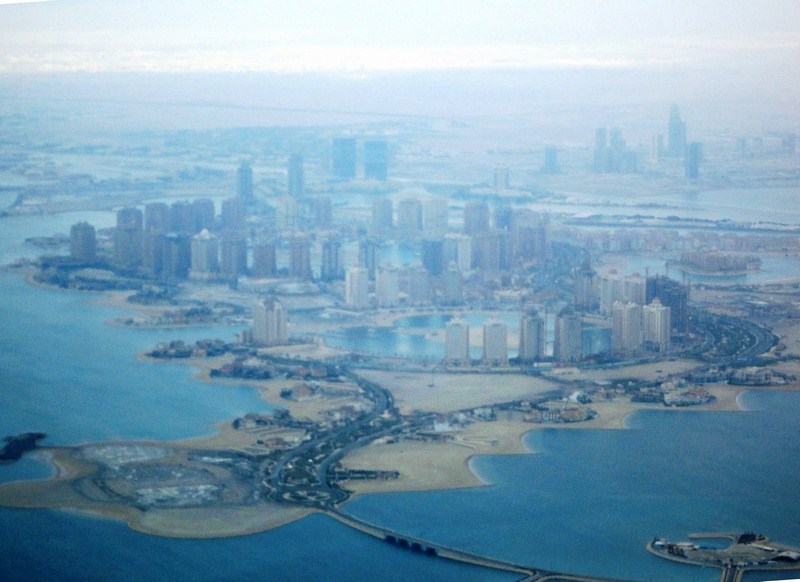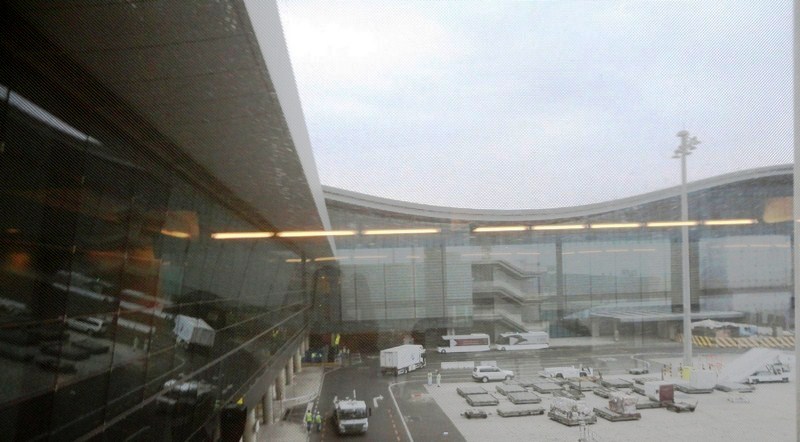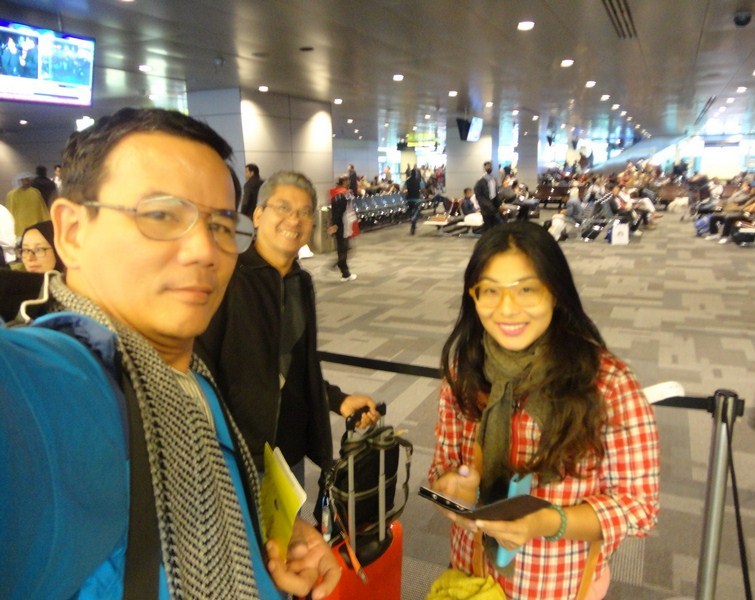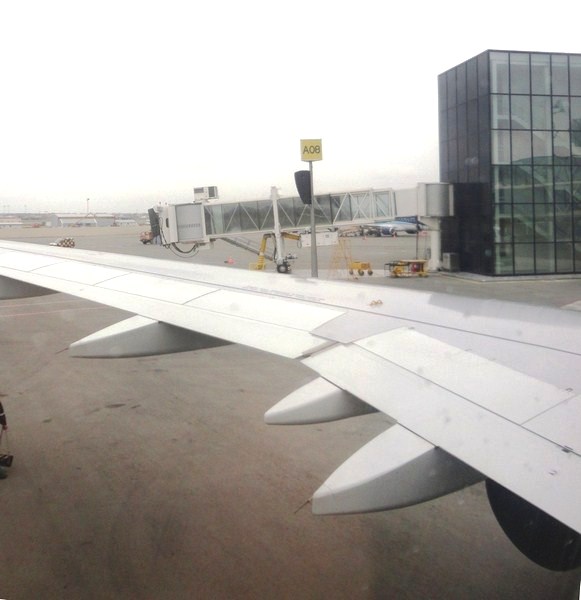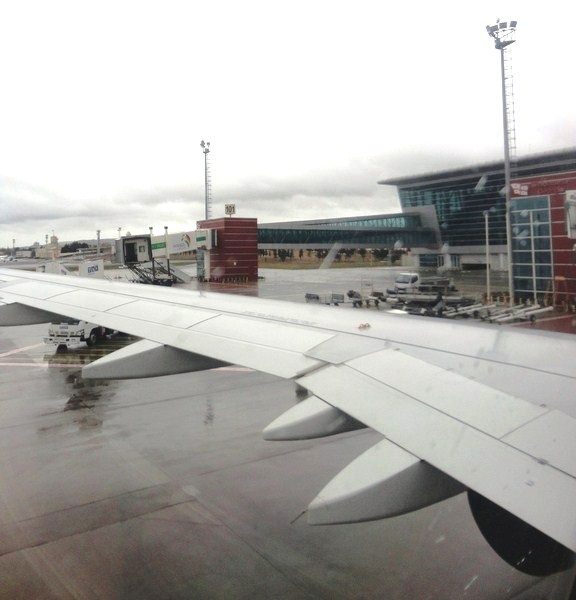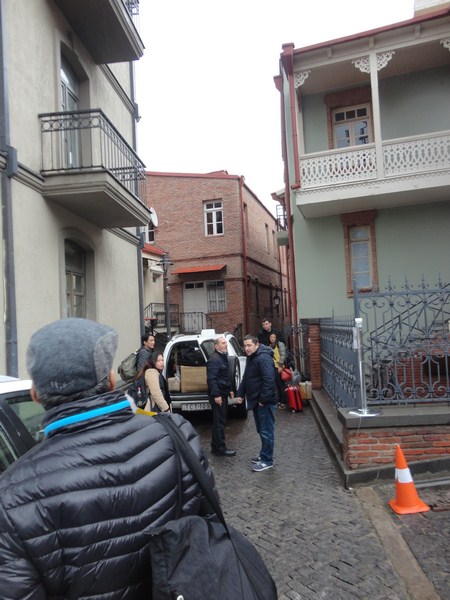The next day (my second day in Georgia), after breakfast at our hostel, Filipina expat Ruby and I dropped by the nearby hostel where Buddy, Pancho, Melissa and Riva were staying, hoping to invite any of them to join us in going to Borjomi. Riva, who just arrived early that morning, was game and all three of us walked to the nearby Avlabari Metro Station where we all took the Metro to Didube Metro Station.
Upon arrival, we all boarded a Borjomi-bound marshrutka (minibus). The fare was 8 GEL and the 156.4-km. journey, via the Tbilisi-Senaki-Leselidze Highway/E60, took us about two hours. Along the way, we passed by Tserovani, a village of about 2,000 identical houses built to house Georgians who fled South Ossetia during the war.
The attractive resort town of Borjomi, in south-central Georgia, is one of the districts of the Samtskhe-Javakheti region and is situated in the northwestern part of the region, in the picturesque Borjomi Gorge on the eastern edge of the Borjomi-Kharagauli National Park, between the Vakhani and Trialeti Ridges. Clinging to the hills on either side of the Mtkvari River, 850 m. above sea level, it is the largest mountain spa in Georgia, with an estimated population of 14,445.
The town is famous for its love-it-or-hate-it but curative mineral water, the number one export of Georgia. As early as in the 15th century, the mineral waters of Borjomi were already mentioned but it only gained wide notoriety when a daughter of Evgeny Golovin, viceroy of the Russian Tsar in the Caucasus, was cured of her gynecological problems there. Yekaterinsky Spring, one of the mineral water sources, was named after this girl while the second one, Yevgeniyevsky Spring, was named after the viceroy himself.
The Romanov House got interested in these mineral sources and the first bottling plant producing bottled Borjomi mineral water was opened by the tsar’s order. The first bottles, made with transparent crystal glass, were later replaced by dark bottles, and every bottle was packed in a reed “case” and sealed with the factory stamps. Drinking it is said to benefit the digestive system and body metabolism. Borjomi mineral water can now be bought in shops in over 30 countries throughout the world and I’ve already tried it during dinner the night before.
We dropped off at Rustaveli Street, the main commercial street of Borjomi which runs along the northern bank of the Mtkvari River. Walking along this street, we dropped by the tourist office housed in a glass pavilion between Rustaveli Street and the river. Here, we left our backpacks and luggage in a bookshop owned by the sister of the landlady of Likani Guesthouse where we will all be staying overnight. Thus unburdened, we crossed over the Bridge of Peace, a white painted suspension bridge over the Mtkvari River, leading to the southern half of the town where Borjomi Mineral Water Park is located.
Stretched along the small Borjomula River, this city park contains the source of Borjomi mineral water. A lovely place for us to do a brisk hike in the chilly mountain air, the park occupies a lovely stretch of forest following the narrow, wooded valley along the Borjomula River. There are several dozen health institutions, recreation complexes, sanatoriums and rest houses in Borjomi and all of them are located in the vicinity of the park. About 300 m. west of the bridge, Rustaveli Street changes its name to Meskheti Street.
Dating from 1850, the park has recently been renovated and reopened in 2005, its opening attended by the presidents of Georgia and Ukraine. Today, it is the most extensive ecologically-themed amusement park in the Caucasus, with a number of attractive themed playgrounds, a few amusement-park style attractions, a swimming pool and a cinema theater. The first part of the park contains the amusement park and cafes.
However, most of the park’s facilities – cafes, funfair attractions, the cinema, the cable car and the hilltop Ferris wheel – only operate from about late June to early September. During the summer, a park admission fee of 0.50 GEL is charged but, as it was the onset of winter, admission was free. Near the entrance to the park, local vendors here sell homemade jam made from pine tree cones. It is claimed that the jam is good for improving immunity and useful for curing upper respiratory tract infections.
On the south bank of the river, just east of the bridge is the renovated, Stalin-era Borjomi Park Train Station. The railway here opened in 1894. East of the station, we turned right along 9 Aprili and walked another 600m. Along the way, we passed by a new pedestrian bridge, a quite stunning example of the wave of new Georgian architecture that perfectly symbolizes the restorative water that has made Borjomi famous.
Beside the roller-coasters and the pools are the mineral water springs where locals go to get their drinking water, filling bottles with it. Warm mineral water flows from taps in a green pavilion straight in front of the entrance where, nearby, plenty of stalls sell souvenirs and empty plastic bottles of various volumes.
Ruby and I drank the water in the main spring’s two battered taps. Though slightly warm, sour and a bit salty, with a tang of sulfur, very different from the slender glass bottled water I tried the night before, we still managed to ingest this stronger tasting water. As it is flavored with sodium carbonate, it was said to taste like Vichy water.
It was a different story with Riva who couldn’t find the courage to swallow it. There are said to be other springs with fresh water that have no strong taste. We continued on to the rear part of the park where, near the entrance, is the cable car (1 GEL each way) that brings visitors up to plateau where the view over Borjomi was said to be fantastic.
If we continued past the asphalted part for another 2.5 kms., we would have reached a lovely clearing in the forest where there’s small, a concrete, Soviet-era, hot spring-fed swimming pool with a constant temperature of about 27°C.
Qatar Airways has daily flights from Diosdado Macapagal International Airport (Clark, Pampanga) to Tbilisi (Republic of Georgia) with stopovers at Hamad International Airport (Doha, Qatar, 15 hrs.) and Heydar Aliyev International Airport (Baku, Azerbaijan, 1 hr.). Website: www.qatarairways.com.

